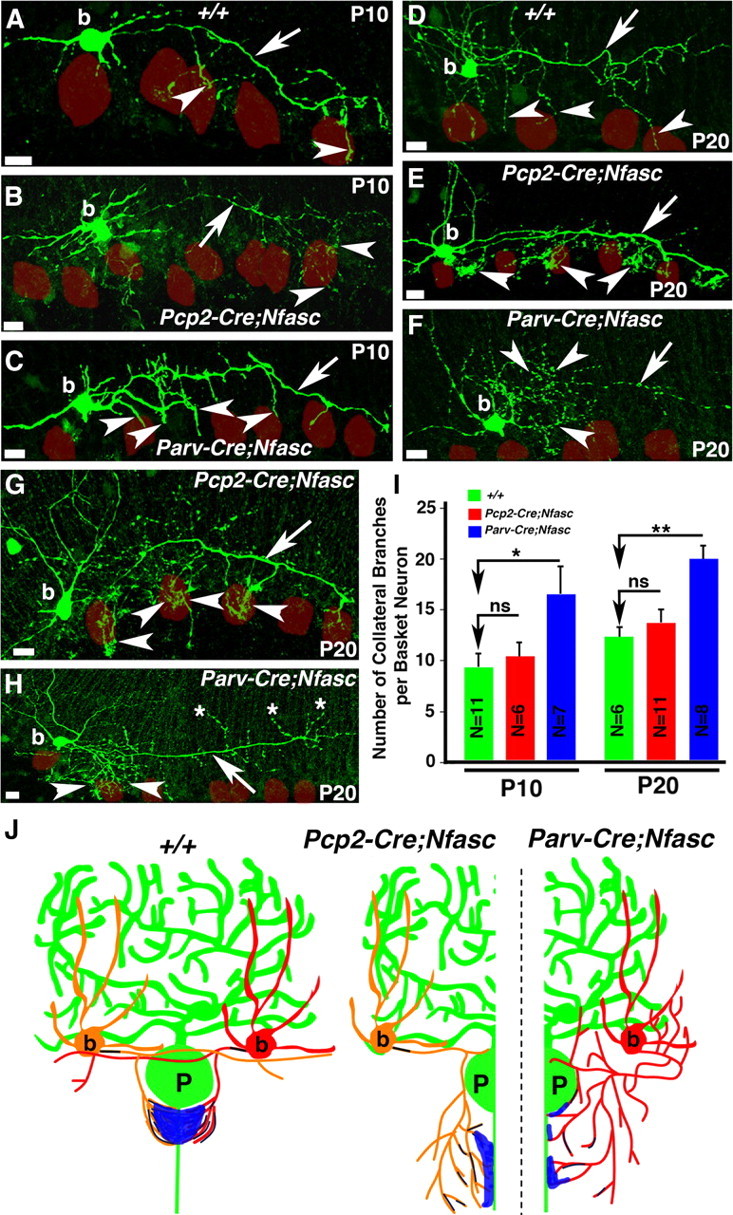Figure 5.

Loss of Nfasc in basket neurons causes mistargeting of basket axon collaterals. Wild-type (A, D), Pcp2-Cre;NfascFlox, (B, E, G), and Parv-Cre;NfascFlox (C, F, H) cerebellar sections from ages P10 (A–C) and P20 (D–H) in which basket cells were injected with biocytin and immunostained with Alexa-conjugated Streptavidin (green). Note that basket axons project toward the Purkinje neuron layer in Pcp2-Cre;NfascFlox mutants, but branch excessively at their terminals (B, E, G, arrowheads). In Parv-Cre;NfascFlox mutants, basket axons branch excessively from the beginning of the extension (C, F, H, arrowheads) and sometimes point in opposite directions (H, asterisks). Purkinje somas are outlined as red circles. I, Quantification of the number of primary basket terminal branches coming off the main basket axon branch at each time point reveal an increase in branching along the length of the Parv-Cre;NfascFlox basket axon compared with wild-type and Pcp2-Cre;NfascFlox basket neurons. J, Representative drawings summarizing the pinceau structures observed in wild-type, Pcp2-Cre;NfascFlox and Parv-Cre;NfascFlox cerebella. Scale bars: 10 μm. ns, Not significant. *p < 0.05; **p < 0.01.
